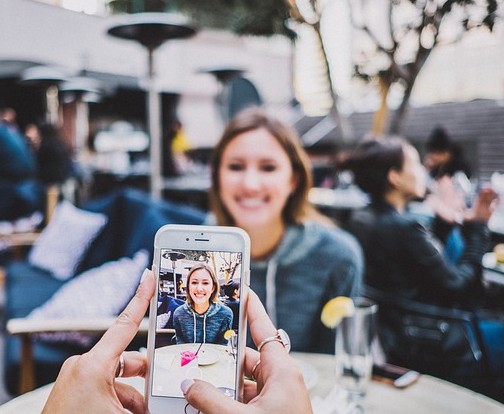Healthier Social Media

The Internet can be a one way mirror reflecting ideal images that make adolescents feel like failures. Social media should be used mindfully with set limits on the amount of time that an individual devotes in it. Become aware of how you feel and what you think when you are using social media. For example, rating your mood before and after you look at Instagram or similar apps can help you determine how they influence your mental health. Socializing online lacks personal aspects of communication like body language and facial expressions, which can contribute to hurt feelings and misunderstandings, and ultimately make talking in person seem more intimidating.
Youth should carefully select who they follow, and parents and guardians should be sure to check and/or change privacy settings after social media accounts are established to ensure that they are not public. When their social media identities do not match their actual emotions, teens can end up feeling even worse. Before posting anything online, stop to think if it is helpful, kind, necessary and, most importantly, true? It is crucial for young people to figure out what makes them happy rather than to simply look at and compare themselves to the ways in which other people live.
According to Psychoanalyst Robin Stern, Associate Director of the Yale Center for Emotional Intelligence, if you are “not feeling good about yourself, it’s likely because you are comparing your insides to someone’s outsides.” Think about what you really know about the internal lives of the individuals you follow on social media. Remember that your own feed likely is a collection of your happiest moments. (The average smart phone user takes thousands of pictures each year in addition to those that are posted on Snapchat, Instagram and Facebook, etc.) A September 2022 study found that what female youth do on social media (rather than simply being on platforms) is predictive of body dissatisfaction. Girls, who consume appearance-focused content by following influencers for fashion or fitness tips or watching beauty tutorials, are more likely to self-objectify and have negative views about their own bodies.
Parents should tell children they understand that peers will post things on private accounts which will be concerning. So they feel comfortable talking to you about it, reassure them that you will not embarrass them or restrict/take away their social media as a result. (Remind adolescents to tell friends, who may have expressed mental health concerns online, that helping them is something they want to do and not a burden.)
In comparison to perfectly curated accounts, viewing ones where individuals deal with similar issues can be helpful, providing useful advice and information and helping adolescents to feel less lonely. Inspiring mental health Instagram accounts include @dlcanxiety, which posts illustrations, Tweets and videos regarding anxiety and other mental health topics; @halfthestory, which features digital wellness tips and has the goal of helping people use social media to “connect rather than disconnect”; and @nedratawwab, Therapist Nedra Glover Tawwab’s account that offers concrete suggestions. Rather than mindlessly scrolling social media, use it to connect with friends. If you are simply bored, listen to music, meditate, read or use a coloring book instead.
Social media can be used in a healthy manner. Consider turning off notifications and tracking screen time to learn how much time you actually spend on social media. Maintain balance by engaging in activities and seeing friends in person. Finally, spend time online with accounts and communities that are positive and make you feel supported.